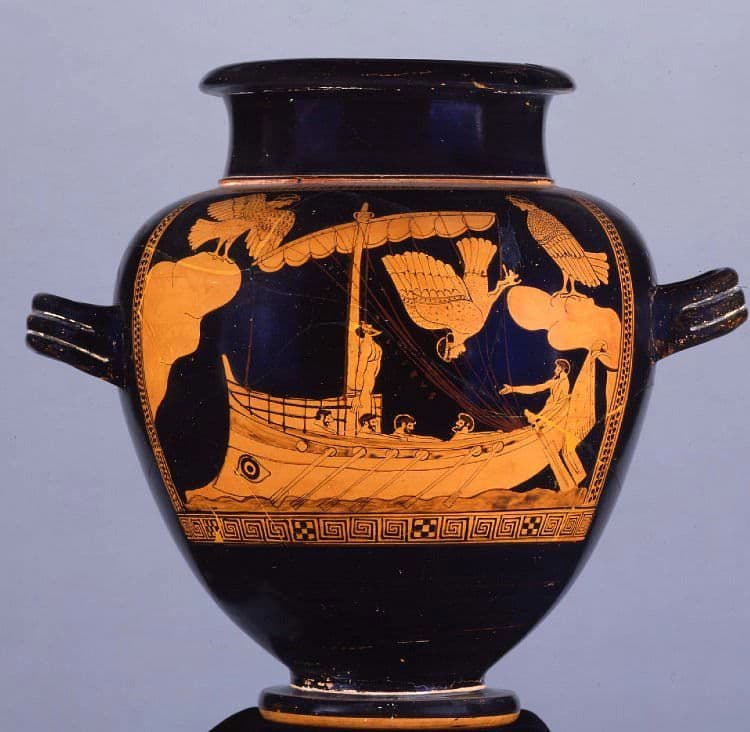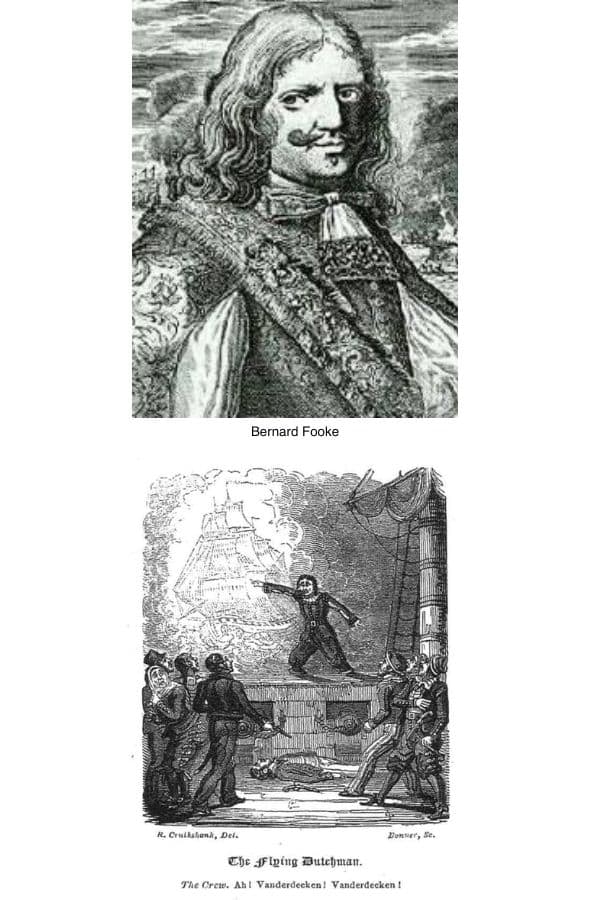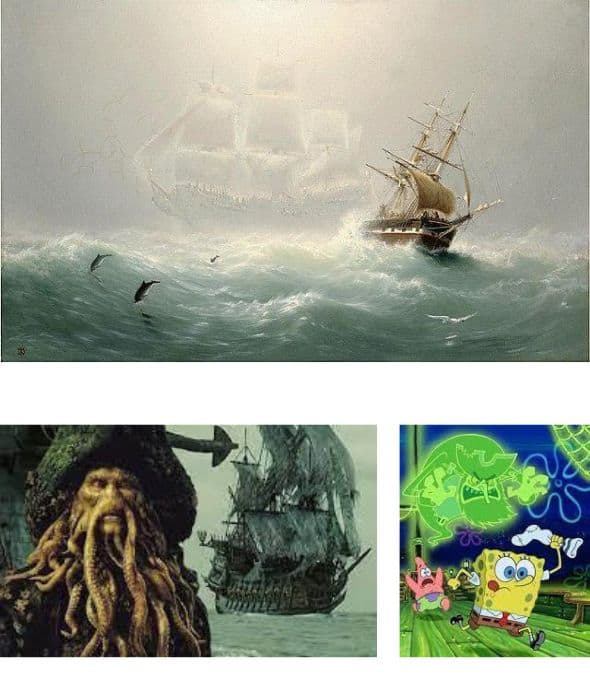The Flying Dutchman Online Course by Dr. Carol AndersonThe Legend of the Dutchman
by Dr. Carol Anderson
A Phantom Ship, All Aglow…
As long as humans have sailed the oceans, they have created legends and propagated superstitions; it’s no wonder, as life at sea carried with it countless inherent dangers. From the bad luck brought by a female passenger to the ominous portent of a red sunrise, sailors and fishermen held countless fears close to their hearts.
The legend of the ghost ship Flying Dutchman first sent chills down the spines of seamen in the 17th century, during the heyday of the Dutch East India Company. The ghostly ship would appear glowing with an unearthly light, floating above the ocean’s surface, and often heralded bad weather or other dangers to those who saw the apparition.
The Dutch East India Company was a powerful trading company founded in 1602 to spearhead trading in East Asia, and at its most influential it held the power to establish colonies, wage wars, mint currency, and pursue other activities usually restricted to national governments. First navigated in 1488 by the Portuguese mariner Bartolomeu Dias, the Cape of Good Hope, located near the southern tip of the African continent, was a landmark along the vital trade route from Europe to India. Thwarted by the powerful storms and treacherous obstacles, over 3000 vessels came to grief on the Cape, leading to its nickname, “the graveyard of ships.” Bernard Fokke was a captain for the Dutch East India Company who was known for traveling the route from the Dutch Republic (modern-day Netherlands) to Java, rounding the Cape. With the belief that such speed could only be supernaturally inspired, many believed Captain Fokke to be touched by Satan himself. Capt. Fokke is said to be the real-life inspiration for the legend of the phantom ship captained by a cursed sailor, doomed to navigate the world’s oceans for all time.


The legend was first published in story form in the May 1821 issue of Blackwood’s Edinburgh Magazine, with the main character, Hendrick van der Decken being modeled after Captain Fokke.
The story is this: that in doubling the Cape they were a long day trying to weather the Table Bay. However, the wind headed them, and went against them more and more, and Van der Decken walked the deck, swearing at the wind. Just after sunset a vessel spoke him, asking him if he did not mean to go into the bay that night. Van der Decken replied: “May I be eternally damned if I do, though I should beat about here till the day of judgment.” And to be sure, he never did go into that bay, for it is believed that he continues to beat about in these seas still, and will do so long enough. This vessel is never seen but with foul weather along with her.
This story was adapted into a British melodrama in 1826 which subsequently inspired an episode in Heinrich Heine’s 1833 novel The Memoirs of Mister von Schnabelewopski. In this satirical novel, a character attends a performance of the melodrama, but Heine enhances the story of the melodrama with two important additions: the curse could be broken through the love of a faithful woman, and the doomed captain was allowed to set foot on land every seven years to seek this paragon. Heine also relocated the story from the Cape of Good Hope to the North Sea off the Scottish coast. Wagner’s version also originally took place off the Scottish coast, but late in the rehearsal process he moved the action yet again, to the Norwegian coast.
Incidentally, sightings of the Dutchman’s fabled vessel continued well into the nineteenth century. Prince George of England (later crowned King George V), his brother Prince Albert, and their tutor encountered the apparition while their ship was moored off the coast of Australia. The royal log states that at 4 A.M. “the Flying Dutchman crossed our bows. A strange red light as of a phantom ship all aglow, in the midst of which light the masts, spars, and sails of a brig 200 yards distant stood out in strong relief as she came up on the port bow. The officer of the watch from the bridge clearly saw her, as did the quarterdeck midshipman, who was sent forward at once to the forecastle; but on arriving there was no vestige nor any sight whatever of any material ship was to be seen either near or right away to the horizon, the night being clear and the sea calm.”
That cursed sea captain sails on today, celebrated in popular culture and present-day media. The captain of the Flying Dutchman chased SpongeBob SquarePants, encountered Johnny Depp’s Captain Jack Sparrow across several films, and even inspired a folk rock ballad by Jethro Tull included on their 1979 album Stormwatch.






